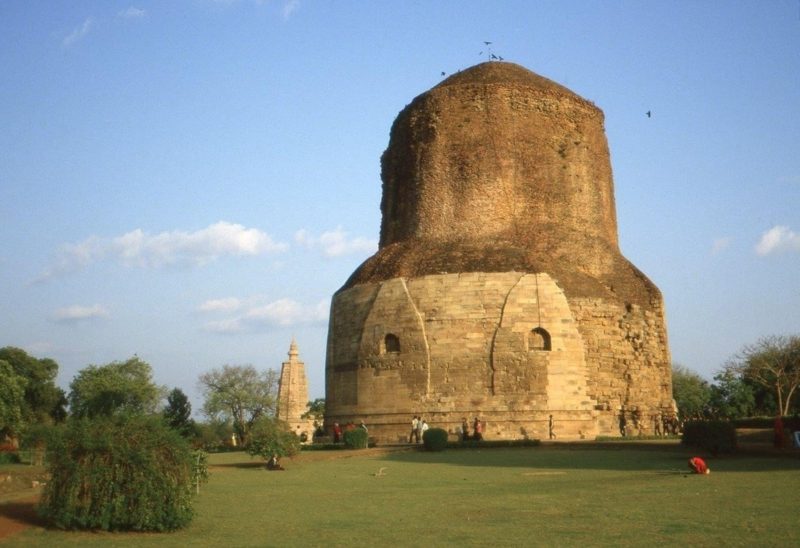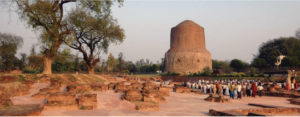
09 Jul Stupas and the Origin of Pilgrimage

On many levels, pilgrimage in the Buddhist tradition is connected to stupas, and the stupa at Milarepa Retreat Center is the origin and destination for all of the Earth Vase Pilgrimages.
The Earth Vase Pilgrimage began as an effort to raise awareness about the stupa project at Milarepa Retreat center. Given our location in rural Tennessee, there isn’t much interest or understanding of the meaning or benefits of having a stupa in the region. Through creative collaboration, the idea was conceived to bury earth vases at various locations in the region as a way of illustrating and enacting what the stupa project was intending to accomplish: a sacred destination that was also a journey, a place for the practice of natural mind, and an embodied ecology that offers direct answers and practices to address the personal, social, and global crises of our time.
Original Stupas, Original Pilgrimage

Mahabodhi Stupa, Bodhgaya
At the time of his death, according to the Mahaparinibbana Sutta (V, 16-22), the Buddha instructed that the remains and relics of his body be distributed and enshrined in four main places in India and Nepal: Bodhgaya where he attained enlightenment, Kushinagar where he was passing away, Lumbinī where he was born, and Sarnath were he first taught the Dharma. These remains were stored in reliquaries called stupas, and these stupas became the focal points for the first forms of Buddhist pilgrimage. The Buddha instructed his followers to travel to these locations as a way of practicing mindfulness of impermanence, discipline, and devotion for the Buddha, Dharma, and Sangha.
The sacred design of stupas evolved in subtlety and significance over the next millennium, taking on their own style according to the cultures they were imbedded within and the type of Buddhism that was being practiced. The Indo-Tibetan tradition gave birth to its form of the stupa based on the reliquaries of the original pilgrimage places of the historical Buddha, as well as the symbolic context of the Mahāyāna and the sacred design of the Vajrayāna.
Read Further “Myth and Design: Axis Mundi and the Netherworld”


